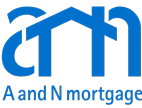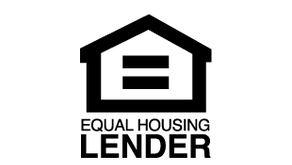If you’re like most first-time home buyers, when it comes to finding a home loan, one obstacle tends to get in your way more than most. We’re talking about down payments. High down payment requirements can serve as the first and biggest roadblock for those who might have trouble saving up enough to get a home loan.
FHA and VA loans offer some low-to-no down payment loans but aren’t accessible to all. Here, we’re going to look at the latest option: conventional mortgages with down payments as low as 3%. We’re going to look at what you need to know about them and who they might work best for.
What Is A Conventional Home Loan?
Simply put, a conventional home loan is one that doesn’t have any kind of guarantee or insurance provided by the federal government. They aren’t backed by agencies like the Federal Housing Authority or Veteran Affairs. As such, conventional loans follow the requirements set out by the two larger mortgage loan buyers in the US; Fannie Mae and Freddie Mac.
Conventional loans account for 60% of all home loans issued throughout the country. Often, they come with higher credit score requirements, meaning they can be tougher to apply for, but they can result in lower interest rates than other types of home loans.
Down Payments For A Conventional Home Loan
There are no set guidelines for what is considered a standard down payment when it comes to conventional home loans. However, they usually require down payments that are in the 5 to 20% range.
There are now some conventional loan programs that offer down payments as low as 3 percent of the overall value. Exceptions that fall into the lower down payment option include the Conventional 97 Loan and the HomeOne programs that offer 97% of the property’s total value, meaning that buyers have to pay only a 3% down payment.
What Are Conventional 97 Loans And HomeOne Loans?
Here are a few key features and facts you need to know about both types of loans:
Conventional 97 loan (offered by Fannie Mae): Up to 97% financing on loans with a $484,350 maximum loan limit, eligible for those with a credit score of 620 and above who have a debt-to-income ratio of 43% or lower. It’s eligible for single family homes, PUD, condos, townhomes, and CO-OP, but to owner-occupied buyers only and not real estate investors. Lastly, at least one of the borrowers taking the loan must not have owned a house in the 36 months prior to applying.
HomeOne loan (offered by Freddie Mac): Up to 97% financing on 30 year fixed rate loans for a primary residence. There are no income or geographic limits on where you can apply for a HomeOne loan. There are no mortgage reserves required, but at least one of the borrowers must be a first-time homebuyer, and all borrowers must occupy the property. However, borrowers can still own other properties.
Pros And Cons Of A Low Down Payment Conventional Loan
Like all loans, conventional loans with 3% down payments have their own unique advantages and disadvantages to consider:
Pros of Low Downpayment Conventional Loan:
- 3% down payment makes it much easier to get a loan; that’s even lower than the 3.5% down payment requirement for an FHA loan
- Attractive for first-time homeowners
- High maximum loan amount makes it easy to get the kind of home you want
Cons of Low Downpayment Conventional Loan :
- Higher credit score requirements (about 620) than an FHA loan
- Maximum loan amount cap might be restrictive for some who want to buy a more expensive home (jumbo loan amount)
- Cannot be used for homes that include multiple units
- Cannot be used for property investments or to buy rental income homes
- Low down payment homes require private mortgage insurance
Comparison With Federal Housing Authority Loans
Federal Housing Authority (or FHA) loans were designed to help more Americans buy houses rather than rent them. As such, they have previously allowed buyers more flexibility than prior conventional loan standards. These loans are borrowed from traditional lenders, but insured by the FHA. You can read more about them on our in-depth look at FHA loans.
However, now that Conventional 97 loans and HomeOne loans have set standards for conventional home loans with down payments as lose as 3%, how do FHA loans compare? Here, we’re going to look at the unique advantages of both kinds of loans.
Let’s start by looking at the FHA loan advantages, particularly in comparison to the Conventional 97 loan:
- Typically lower interest rates
- Minimum credit score requirement of 580
- Higher loan insurance premiums as it requires an upfront fee and permanent mortgage insurance
- Flexible qualification criteria
- Accessible for those with debt-to-income ratio as high as 51%
- FHA loans are assumable
- Student loans in deferment not counted in your debt-to-income ratio
In comparison, here are some of the advantages of Conventional 97 loans:
- Private mortgage insurance is required initially but cancels as soon as the overall loan-to-value ratio reaches 78%, unlike FHA loans where the mortgage insurance payment (MIP) is permanent and can never be canceled. (FHA borrowers must pay a one-time up-front mortgage insurance payment plus an ongoing monthly payment to compensate for the increased risk of the low down payment.)
- House must be owner occupant for at least one year.
- Minimum down payments of 3% are available, which is .50% lower than what FHA loans require (3.5%)
- Higher maximum loan amounts are available. (Up to $484,350 versus $314,827 on single-family properties in high-cost areas.)
While FHA loans are slightly more accessible, due to their more flexible credit and debt-to-income ratio requirements, conventional home loans with lower down payments can end up being the more cost-effective loan choice for new homeowners thanks to their lower down payments and the ability to cancel the mortgage insurance. They typically do have slightly higher interest rates, but at least buyers looking for low-interest rates have more than one option at their disposal now.
FAQs About 97% LTV Home Purchase Loans
If you’re interested in a conventional home loan with 3% down, then you might want to know exactly what that means moving forward. Here are the answers to some of the most frequently asked questions regarding 97% LTV home purchase loans.
- How much home can I buy with a conventional home loan?: The maximum loan amount of these loans is $484,350, which means that with your 3% down payment added on top, you could buy a home for up to $436,216.
- What’s the minimum credit score requirement: The minimum credit score requirement is 620, but most lenders will usually ask for a score that’s at least at 680 or higher.
- What’s the maximum debt-to-income ratio requirement?: While this can change depending on your credit score, the highest DTI requirement for 3% down conventional home loans is 43%.
- Are FHA loans cheaper?: While you do pay a higher interest rate on 3% down conventional loans, they can save you money in the long-run as the insurance on the loan will cancel when you reach 78% loan-to-value ratio, which doesn’t happen with FHA loans. Overall, conventional home loans tend to be cheaper.
- Can I use gifts as a down payment?: Yes, you can have up to 100% of your down payment funded by gifts received from family members and friends.
- What kind of properties can I use this loan for?: 3% down home loans are only available for owner-occupied borrowers buying for single family homes, PUD, condos, townhomes, and CO-OP properties.
- Do I have to be a first time home buyer?: Yes, but this doesn’t mean that you can’t have ever owned a home before. Conventional 97 loan program specifications state that a first time home buyer is someone who hasn’t owned a home in three years.
- If I’ve owned a home, can I apply alongside someone who hasn’t?: Yes, only one of the borrowers has to be a first-time home buyer.
- Can self-employed individuals apply for one?: Yes, so long as you can provide 2-years’ worth of federal tax returns, you can use a Conventional 97 home loan.
If you want to know how any of the other low down payment loans from A and N Mortgage work, such as the FHA loans we offer, we also provide FAQs on those to help you better understand the options available to you. We will help you understand which low down payment option works best for your circumstances.
Our 3% Down Services And Other Low Down Payment Loans
At A and N Mortgage, we offer a variety of different low down payment loans, making it much more affordable to begin owning your first home. Whether you’re looking for conventional home loans, FHA or VA loans, we offer the best Chicago rates on mortgages as low as 3% down. Here are a few of the options we offer:
- Conventional loans with 3% Down
- Federal Housing Authority (FHA) loans with 3.5% Down
- Veteran Affairs (VA) loans with 0% Down
All of the loans currently offered from A and N Mortgage are available in Chicago, Illinois, and we are licensed in 6 other states. We are a top mortgage lender in Chicago, Lincoln Park, Logan Square, Wicker Park, and Edgewater.
A and N Mortgage Services Inc, provides you with high-quality home loan programs, including FHA home loans, tailored to fit your unique situation with some of the most competitive rates in the nation. Whether you are a first-time homebuyer, relocating to a new job, or buying an investment property, our expert team will help you use your new mortgage as a smart financial tool.







